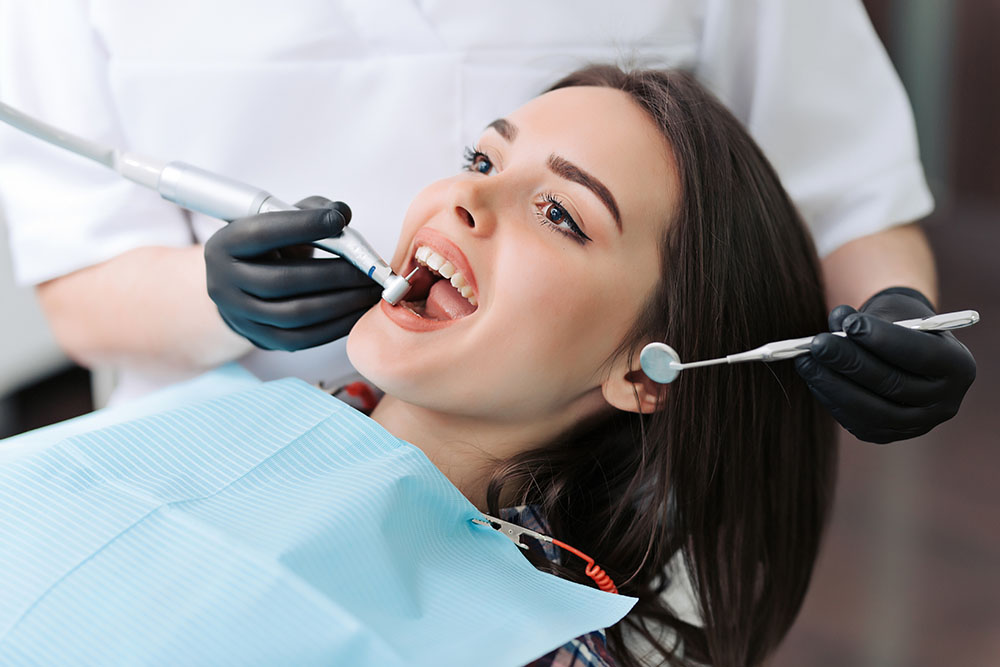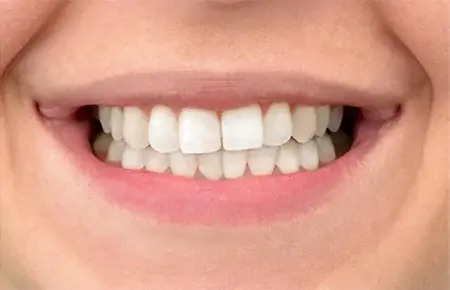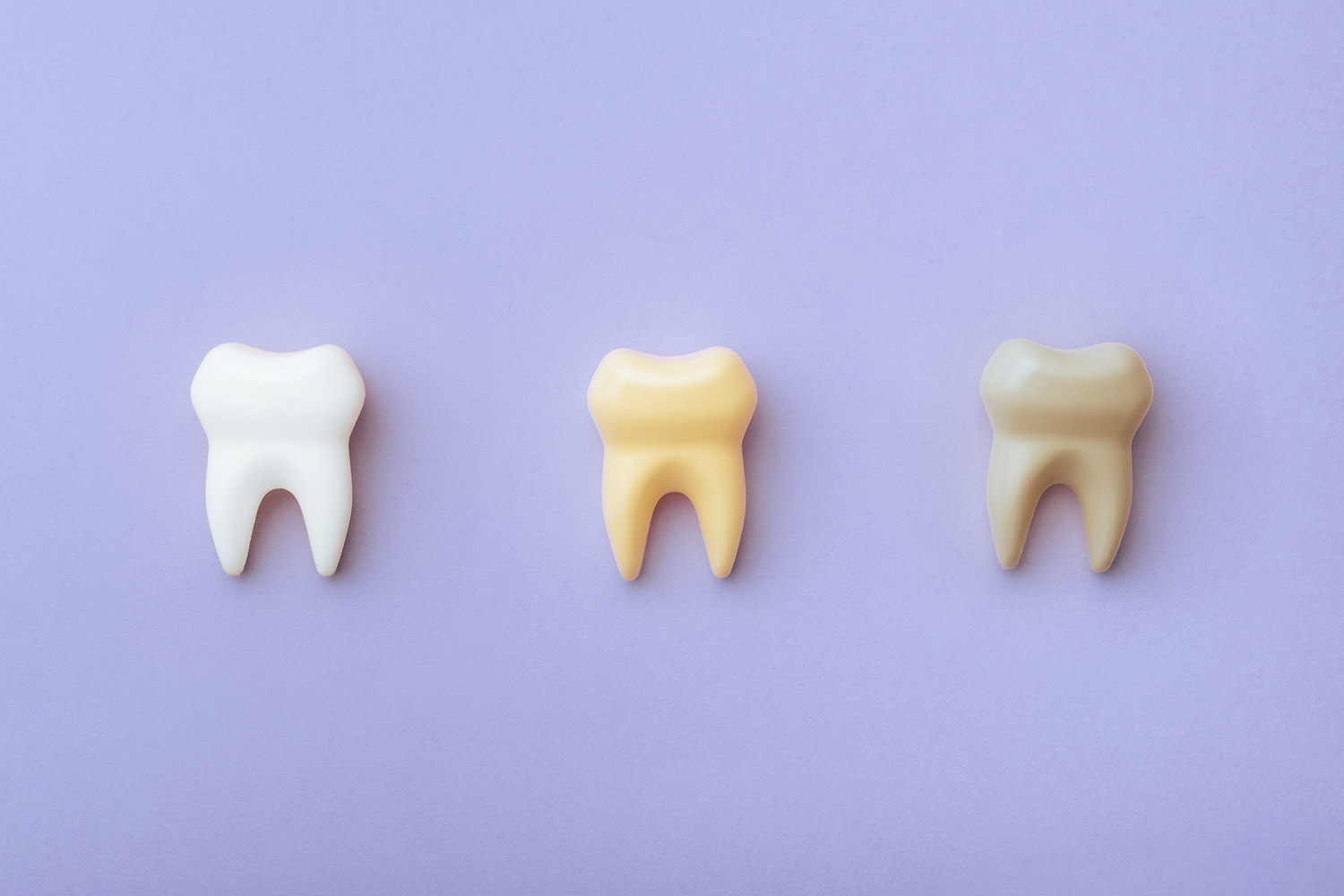
The author of the article
Boris Lipovetskiy, DMD, 31 years experience
Have your teeth significantly changed in color? Has your smile lost its beauty, making you feel self-conscious? In Fort Lauderdale, dentist Boris Lipovetskiy adopts a holistic approach to restore a pearly white smile. In this article, we will discuss the causes of discoloration of one or several teeth, and the treatment methods.
What is Tooth Discoloration?
Discoloration refers to the loss of the natural white hue of teeth. This shift in shade can be gradual or sudden. Discoloration occurs due to altered absorption or reflection of light by the enamel surface.
How teeth change in color:
- External Discoloration: Over time, the enamel can become stained. Pigments or plaque might adhere to the surface and accumulate, leading to darkening or yellowing of the enamel.
- Internal Discoloration: This happens because the dentin (the internal structure) darkens. It results from the infiltration or accumulation of pigment within the structural tissues.

Do you have tooth discoloration?
It's usually evident when the color of teeth has changed. Dark spots easily stand out. These spots can be yellow, brown, or black. If you exhibit any of these symptoms, schedule an appointment with a dentist in Miami, Ft. Lauderdale.
How can I identify it?
- Visual Inspection. Look at your teeth in the mirror under good lighting. Compare the shade of all your teeth.
- Sensations. Sometimes, a change in color is accompanied by sensitivity or pain (if there's damage involved).
- Consultation with a Dentist. This is the best method to determine any change in enamel color. Regular check-ups with a hygienist will help identify the type of discoloration and the appropriate treatment.
Causes of Tooth Discoloration
A single or multiple teeth can darken. Let's explore the reasons behind this.

Internal destructive processes plays a role.
It starts with an inconspicuous white spot on the surface. If not addressed, cavities progressively worsen, destroying the enamel and forming a cavity. This hole gathers food residues and bacteria, leading to darkening. Some of these bacteria also produce pigments that can stain the enamel with dark shades.
This is an inflammation of the soft inner part of the tooth – when the cavity penetrates the pulp. Pulpitis can cause sharp pain, but sometimes the symptoms can be less pronounced. Tooth staining may result from pulp necrosis (decay).
Any traumas, such as hits or falls, can damage the blood vessels inside the tooth. This might result in the release of blood into the dentinal tubules, causing darkening.
Previously, amalgam fillings (a metal alloy with mercury). It was later discovered that such fillings can give a dark-gray hue. This happens due to the infiltration of amalgam particles into the dentinal channels.
Impact of smoking on teeth:
- Tars in tobacco products: The tars found in tobacco settle on the enamel, leading to its discoloration.
- Intensity of smoking: The more frequently and heavily a person smokes, the quicker tar accumulates on their teeth.
- Rate of discoloration: For smokers, teeth can noticeably darken within a few weeks or months after starting to smoke.

Oral Hygiene Improper or insufficient oral hygiene leads to the accumulation of dental plaque. It consists of bacteria and food residues, giving teeth a yellowish hue.
Factors of oral hygiene that play a role in tooth color:
- Soft plaque is easily removed by cleaning, but if left untreated, it can mineralize, turning into hard tartar, which gives teeth a yellow or brown tint.
- Incorrectly chosen brushes don’t remove plaque effectively. Bristles should be soft and flexible for a gentle and thorough cleaning.
- It's advised to change your toothbrush every 3-4 months or upon noticeable signs of wear.
- An incorrect tooth brushing technique can lead to insufficient plaque and bacteria removal, worsening discoloration.
- It’s recommended to brush at least twice daily – morning and evening. This helps prevent plaque accumulation and pigmented substances from food and drinks.
Consumption of Staining Foods and Drinks Enamel has a microporous structure. Food colorants penetrate and settle in these small pores. Especially products with strong staining properties like red wine, coffee, tea, soy sauce, and some fruit juices.
How food dyes change color:
- Many products with high dye content contain acids. They soften the tooth enamel, making teeth more susceptible to staining.
- Food dyes can color plaque on the teeth. If not removed, colored dental tartar forms, which is much harder to remove.
- Regular consumption of high dye-containing products without proper oral care can gradually change enamel color.
- Some food dyes can affect dentin if the enamel is damaged.
Schedule an appointment with a dental hygienist for a teeth cleaning if you've noticed external causes of enamel darkening. They can perform ultrasonic cleaning and AirFlow. For complete whitening, they might use the Opalescence system.
The structure of the teeth changes with age, leading to a yellowish-brown hue in the dental row:
- Enamel changes – it becomes thinner and more transparent with age. The dentin shows through and changes the tooth's color.
- Dentin continues to thicken over time, which can alter the shade of the teeth.
- Daily consumption of food and drinks, along with other external factors, may lead to the loss of some enamel.
- As we age, the gums might recede, exposing the roots, which can also influence the overall shade of the tooth.
- Some medications and illnesses can cause a change in tooth color as a side effect.

Restoring the natural gum contour to enhance the smile's aesthetics with gingivectomy performance. We use laser treatment and modern techniques and approaches for the best results. Schedule an appointment to restore the natural beauty to your smile.
These can influence pigment metabolism and the balance of substances in the body. Disruptions might change enamel color.
- Porphyria – disrupts pigment metabolism in the body. Due to a lack of pigments, enamel darkens.
- Dental fluorosis – arises from an excess of fluoride. The condition leads to white or brown spots.
- Enamel hypoplasia – can make the teeth more transparent or change their color.
What does tooth discoloration look like?
- Calcium Deficiency – In areas with calcium deficiency, the dental enamel starts to break down, resulting in a white spot.
- Fluorosis – Caused by an excess of fluoride in the body. It reacts with enamel minerals, leading to the appearance of white spots. In cases of fluorosis, KOR whitening or veneer placement is conducted.
- Enamel Wear due to Sugary or Acidic Foods – Acids soften the enamel, causing a loss of minerals from it. As a result, the tooth becomes whiter.
- Early stages of cavity.
- Dental Calculus/Tartar – It causes the oxidation of pigments from food, beverages, and tobacco, leading to stain formation.
- Frequent Consumption of Staining Foods and Drinks.
- Smoking or Chewing Tobacco.
- Hardening and staining of dental plaque due to irregular hygiene.
- Prolonged intake of antibiotics – This can lead to enamel breakdown, making the tooth more susceptible to blackening.
How can I remove stains from teeth?
If, despite all efforts, your teeth continue to show discoloration, it's important to make an appointment with a dentist. Do not resort to self-treatment. You may further damage your teeth.
Before the doctor prescribes treatment, he will collect a medical history:
-
Carefully inspect the oral cavity.
-
Find out how long ago the problem appeared.
-
Ask about any accompanying diseases.
Depending on the problem, the following treatment methods may be prescribed:
A dental hygienist performs cleaning to comprehensively remove plaque and tartar:
- Ultrasonic cleaning: With the help of an ultrasonic scaler, which vibrates on the teeth, the dentist removes the plaque.
- AirFlow: This method involves removing plaque using a powerful stream of water with abrasive powder.

Learn more about professional teeth cleaning at our clinic in Fort Lauderdale.
In our clinic, the hygienist can offer 2 methods of whitening:
- Opalescence Whitening. This involves applying a gel based on hydrogen peroxide to the teeth. This method is recommended for yellowish enamel, pigmentation, and age-related color changes of the teeth.
- KOR Teeth Whitening: Used for more severe forms of teeth discoloration. The patient wears trays with a whitening gel for a period of time prescribed by the dentist. This is applied when a patient has tetracycline teeth – the enamel darkens. Regular whitening may not help, therefore KOR Whitening is recommended.

For severe darkening or damage to the front teeth, we recommend installing porcelain veneers. This requires minimal tooth preparation. The doctor scans the oral cavity and installs veneers on the same day. They cover the discolored dental units and provide a pearly white smile.

In cases of tooth damage or deterioration of an old restoration, the dentist conducts filling procedures. The dentist painlessly removes the cavity with a laser, treats and restores the tooth, then installs a composite filling.

If you're dealing with tooth discoloration, whether due to tetracycline teeth, fluorosis, or other causes, contact our expert cosmetic dentists. They are prepared to guide you through the best treatment options tailored to your needs, including KOR Whitening and veneer placement.
Over-the-counter teeth whitening products are available at pharmacies. These may include mouthwashes, teeth strips, and whitening toothpastes. Regular preventive measures are essential:
-
Limit the consumption of coffee, beets, red wine, and other staining foods.
-
Refrain from using tobacco.
-
Consume more dairy products as they are rich in calcium.
-
Ensure your drinking water is fluoride-free.
-
Clean your teeth rows thoroughly. Replace your toothbrush approximately every three months.
-
Reduce the intake of sweets and acidic foods.
-
If you suspect cavities or dental calculus, see a dentist.
A & Q
The cause could be stomach diseases. For instance, during gastritis, hydrochloric acid from the stomach reaches the oral cavity. It adversely affects the enamel, leading to tooth discoloration.


